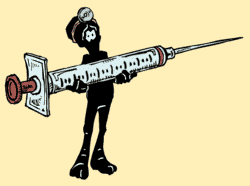 According to Zimbabwe’s finance minister Tendai Biti, the country’s public account balance is down to $217 after public servant salaries were paid last week. Mr Biti says that the country has no money to fund the elections and constitutional referendum that the president wants to run this year. President Mugabe has ordered him to find some money from international donors, but international donors might not be so keen on funding the types of elections that Mugabe has been running in recent years.
According to Zimbabwe’s finance minister Tendai Biti, the country’s public account balance is down to $217 after public servant salaries were paid last week. Mr Biti says that the country has no money to fund the elections and constitutional referendum that the president wants to run this year. President Mugabe has ordered him to find some money from international donors, but international donors might not be so keen on funding the types of elections that Mugabe has been running in recent years.
The situation is a complex one. In the past Mugabe and his supporters have been reluctant to accept donor funding for elections because donors want to influence the outcome by, for example, having observers to ensure that votes are counted fairly and voters are allowed to exercise their choice freely. Such western ideals do not suit Mugabe’s style of electioneering, which involves cracking down on his political opponents with violence and intimidation, and rigging vote counts.
So what Mugabe and his party really want is donations with no strings attached. Western countries who are interested in democracy and the promotion of free and fair elections are unlikely to be keen about making donations on that basis. On the other hand, less principled actors who have an eye on the country’s mineral wealth might be interested in doing a deal.








